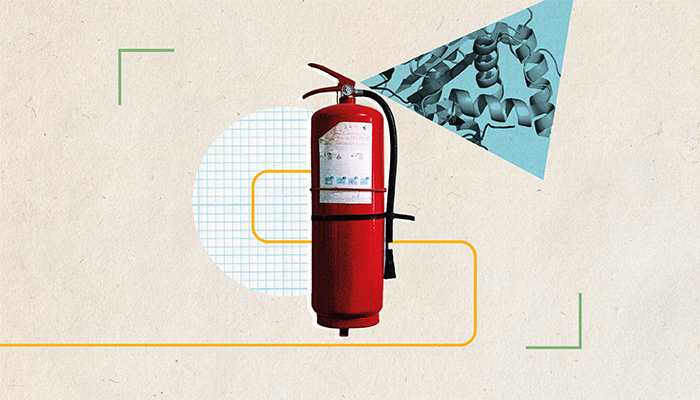
For some, intense physical activity is a hobby; for those working in firefighting, law enforcement, or the military, it’s part of the job – one that can come with health risks. Researchers from Pacific Northwest National Laboratory, USA, set out to quantify that risk using multiomics – and they found that intense physical activity was associated with an increase in respiratory infection risk (1).
In a collaboration with the Los Angeles County Fire Department, the researchers collected blood, urine, and saliva samples from volunteer firefighters before and after an intense 45-minute workout simulating real-life wildfire situations of physical stress.
“We used a method that we developed named MPLEx (metabolite, protein, and lipid extraction), which allowed us to perform the three different omics measurements from a single sample,” says Ernesto Nakayasu, Senior Research Scientist and lead author of the study. The researchers used LC-MS and GC-MS to quantify the changes of 3,835 proteins, 730 lipids and 182 metabolites in response to intense activity.
The results revealed signatures of energy expense, tissue damage, and a shift in inflammatory response; a decrease in three pro-inflammatory cytokines and an increase in eight antimicrobial peptides. “The biggest surprise was to discover that high-intensity exercise was associated with an increase in susceptibility to respiratory infections. Usually, exercise is associated with protection from such infections, but it turns out that the high intensity has some detrimental effects,” says Nakayasu.
One factor potentially limiting applicability of the findings to the wider population is that wildland firefighters are perennially exposed to specific respirable toxic pollutants that may permanently alter their immune system via immunomodulation and gene expression of key metabolic pathways. “Further epigenetics investigation would help to illuminate this potential bias,” wrote the authors (1).
The team is now hoping to mitigate occupational health risk with preventive measures, such as reducing exposure to infection and introducing relaxation techniques (eg. ice bath or hot sauna, hydration, appropriate feeding, sleeping, massage) to aid in recovery. According to Nakayasu, there is also potential to use some of the molecules identified as biomarkers of occupation-associated illnesses. “Then we will combine the different biomarkers to make multi-panel assays that can tell us what specific illness the person is suffering from or even predict the likelihood that such an event will occur.”
Credit: Images for collage sourced from Unsplash.com and Wikimedia Commons
References
- ES Nakayasu et al., “Elucidating regulatory processes of intense physical activity by multi-omics analysis,” Military Med Res, 10, 48 (2023). DOI: doi.org/10.1186/s40779-023-00477-5




